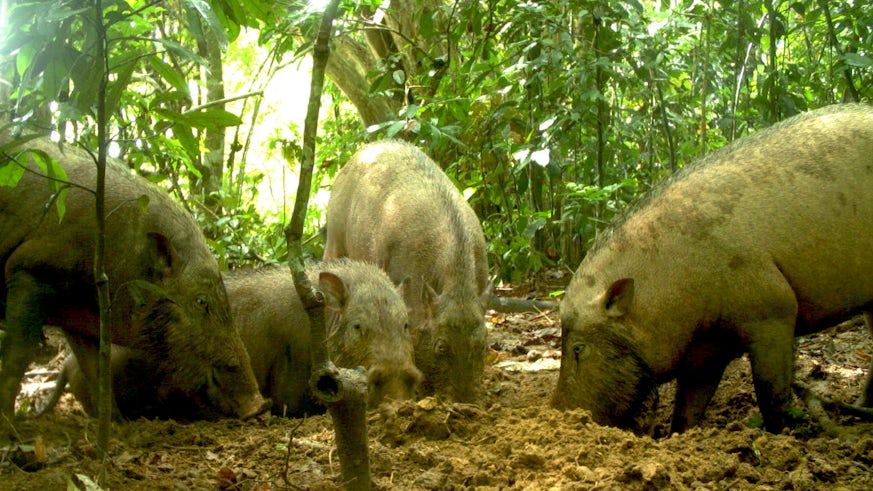Bearded pigs adapting to oil palm
6 March 2018

Bearded pigs in Borneo are successfully adapting to palm oil expansion but still require significant protected forest areas, finds new research by the Sabah Wildlife Department, Danau Girang Field Centre, Cardiff University and University of Berkeley.
The study found that the pigs, renowned for their long facial hair, were consistently found in both degraded forest areas and adjacent palm oil plantations, and were in good physical condition despite the degradation of adjacent forests.
In parts of Sumatra and Borneo, the species has been declining quickly in many areas as oil palm agriculture has expanded. The collaborative research finds that, despite the destruction of their habitat, bearded pigs are finding a way to persist in amongst oil palm expansion, but only with the help of sufficient forests in these fragmented areas.
Dr Benoit Goossens, from the Danau Girang Field Centre, a collaborative research facility managed by Sabah Wildlife Department and Cardiff University, said: “Our research aimed to understand how the bearded pig is adapting to increasingly common fragmented forests bordering oil palm.
“This is also why we just started a long-term study of the bearded pig in the Lower Kinabatangan Wildlife Sanctuary, aiming to set up satellite collars on several pigs to understand their movements and their use of the forest-oil palm landscape.”
The bearded pig is a protected species in Sabah and is considered a vulnerable species by the International Union for Conservation of Nature due to habitat loss and over-hunting in many areas.
Kieran Love, from Danau Girang Field Centre, said: “Our results are very interesting because they suggest just how important forests are for bearded pigs.
“Oil palm fruits may be exploited by bearded pigs, but pigs require many other resources that are typically found in their natural forest habitat.
“Forests provide broad food resources, materials for nesting, areas for wallowing, and places for avoiding predators.
“The forest habitat is also dependent on pigs for accomplishing many ecosystem processes; bearded pigs consume and disperse seeds, aerate soils, and modify plant communities.
“Pigs also act as important prey sources for higher predators, including vulnerable Sunda clouded leopards.
“Therefore bearded pigs rely on forests and, in turn, healthy Bornean forests must contain pig populations.”
The research found that the bearded pigs were living in all forest areas and most oil palm sites and that they were healthy. However, more needs to be done to protect the species during deforestation.
David Kurz, PhD candidate at the University of California, Berkeley, said: “The fact that we have well-fed bearded pigs throughout a fragmented forest-oil palm landscape shows that there may be several options for long-term bearded pig management, which is good news for both hunters and conservationists.
“However, protected and connected forest habitats remain a critical need for bearded pigs, which have historically migrated hundreds of kilometres and are finding themselves boxed into an increasingly small world.”
Share this story
The centre is a collaborative research and training facility based in Sabah, Malaysia.




